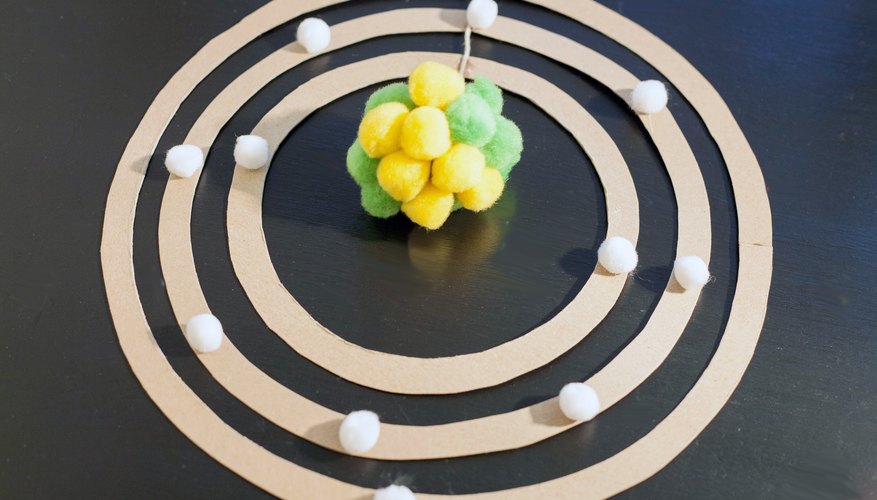A neutral phosphorus atom in a grounded state will have six electrons occupying orbitals in s sublevels across its electron shells. The phosphorus atom has a total of 15 electrons so, we have to put 15 electrons in orbitals. The electrons will be placed in different orbitals according to the energy level: 1s, 2s, 2p, 3s, 3p, 4s, 3d, 4p, 5s, 4d, 5p, 6s, 4f, 5d, 6p, 7s, 5f.
- What Are The Core Electrons In Phosphorus
- Phosphorus Electrons In Outer Shell
- Phosphorus Electron Notation
- Phosphorus Electrons And Neutrons
| The Phosphorus Element as it would be represented on a modern periodic table. Source |
| Bohr Model of a Phosphorus Atom. |
| Electron Configuration of Phosphorus with a Lewis Diagram on the side as well. Source |
| Phosphorus as it moves in a biochemical process. Source |
Sources:
http://thechemistryguru.com/phosphorus/
What Are The Core Electrons In Phosphorus
Lewis Structures
Lewis electron dot structures are representations of the distribution of electrons in molecules and ions. They are useful in determining the three-dimensional shape of a molecule or ion. A Lewis structure can be drawn for a molecule or ion by following three steps:
Step 1: Count the total number of valence electrons.
For a neutral molecule, sum the numbers of valence electrons of each atom in the molecule. For a negative ion, add to the sum the magnitude of the charge. For a positive ion, subtract from the sum the magnitude of the charge.
What is the total number of valence electrons for each of the following molecules or ions? | Click here to see Periodic Table |
Remember the valence electrons for each atom is the same as the A group number in the periodic table. Also remember that a negative charge will add to the valence electron count. Try again!
The correct answers have been entered for you. Make sure and review the calculation below!
| Molecule or Ion | Atoms | Valence Electrons | Total Valence Electrons |
| PH3 | P | 5 | 8 |
| 3 H | 3 x 1 | ||
| CF4 | C | 4 | 32 |
| 4 F | 4 x 7 | ||
| NO3- | N | 5 | 24 |
| 3 O | 3 x 6 | ||
| -1 charge | 1 |
Step 2: Decide on the arrangement of atoms.
The central atom is usually the atom with the lowest subscript in the molecular formula and the atom that can form the most bonds. If all of the atoms usually form the same number of bonds, the least electronegative atom is usually the central atom.

Click on the atom in each of the molecules or ions below that will be the central atom.
| PH3 | CF4 | NO3- |
Fluorine can only make one bond! Try again.

Which atom in the formula has the smallest subscript? Try again!
Step 3: Arrange electrons around the atoms so that each atom has an octet.
EXCEPTIONS TO THE OCTET RULE:
- Hydrogen will only have two electrons.
- Group 3A (boron, aluminum, etc.) may only have six electrons.
- Atoms in the third row and beyond may expand their octet (have more than eight electrons) if needed.
Clicking on an atom in the structures below will add a lone pair of electrons. Clicking on a bond will add a pair of electrons to the bond (making a single bond a double bond). Arrange electrons around the atoms in each structure so each atom has an octet. The number of valence electrons for each molecule or ion is shown beneath the structure.
|
|
| |||||||||||||||||||||||||||||||
Remember hydrogen will not have more than two electrons. This hydrogen is part of a covalent bond (sharing two electrons).
Phosphorus Electrons In Outer Shell
A double bond here would cause hydrogen to share four electrons with phosphorus. Remember that hydrogen will not have more than two electrons.
You better count the electrons already included in your Lewis structure! Remember this structure should only have eight electrons.
Good! This Lewis structure has eight electrons - one lone pair on phosphorus (2) and three bonds (6). The phosphorus has eight electrons, and each hydrogen has two electrons.
This structure should only have eight electrons! The three bonds phosphorus makes to the hydrogen atoms account for six electrons. Where should you place the remaining two electrons?
This fluorine already has eight electrons (an octet) - three lone electron pairs (6 electrons) and one bond (2 electrons).
Carbon is making four bonds (8 electrons) - it already has an octet!
Putting another bond here would definately cause carbon to have more than eight electrons. You better try something else.
Each atom in this Lewis structure should have an octet of electrons (8 electrons). Remember that each lone electron pair counts as two electrons and each bond counts as two electrons (for each of the atoms participating in the bond).
Good! Each atom in this Lewis structure has an octet and the structure has a total of 32 electrons.
Phosphorus Electron Notation
Putting another lone electron pair on this oxygen will cause it to have greater than eight electrons.
This nitrogen already as eight electrons (one lone pair and three bonds).
Putting another bond here would cause nitrogen to have more than eight electrons. You should try something else.
Good! This Lewis structure has a total of 24 electrons and each atom has an octet. A complete Lewis structure for an ion is bracketed and includes the charge.
While each atom in this structure has an octet, you have used too many electrons! This ion only has 24 electrons.
Phosphorus Electrons And Neutrons
